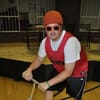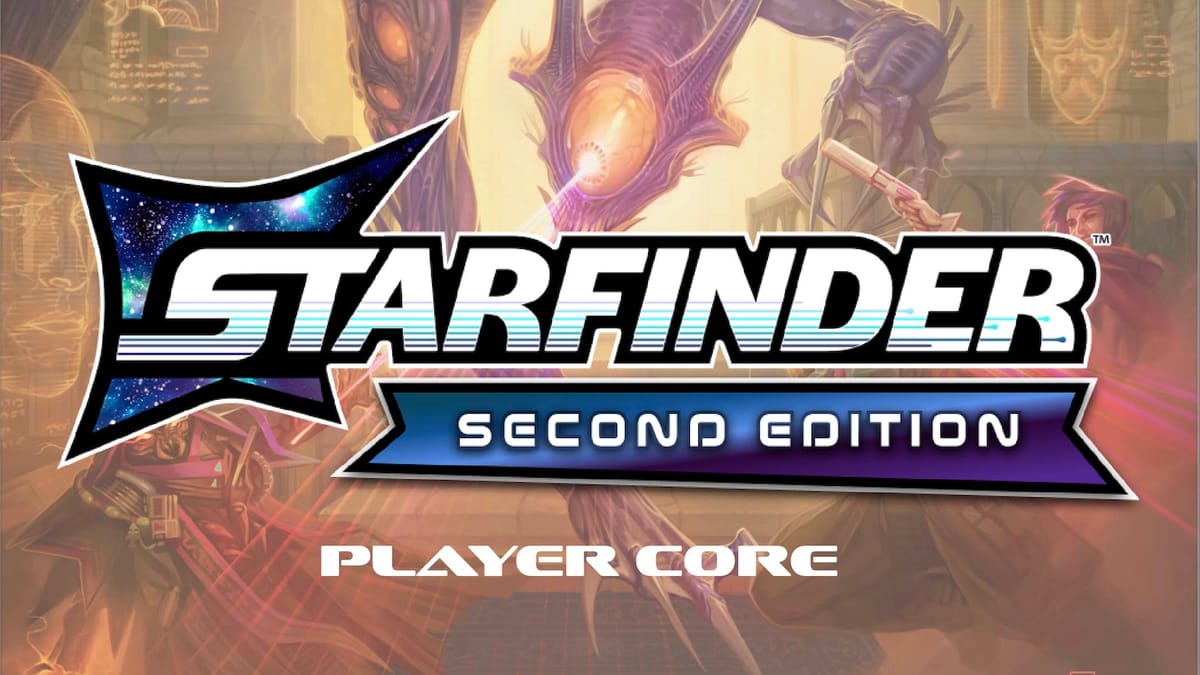
Back in 2017, publisher Paizo released the first edition of Starfinder, a science fiction roleplaying system based on its original Pathfinder fantasy system. After a second edition, a remaster of Pathfinder, and moving away from the Open Game License (OGL) to the new Open RPG Creative License (ORC), it was time to update the system to further align with the Paizo line. Enter Starfinder Second Edition, a retooling and streamlining of the original system set in the Pact Worlds, welcoming any brave adventurers to explore what the world has to offer.
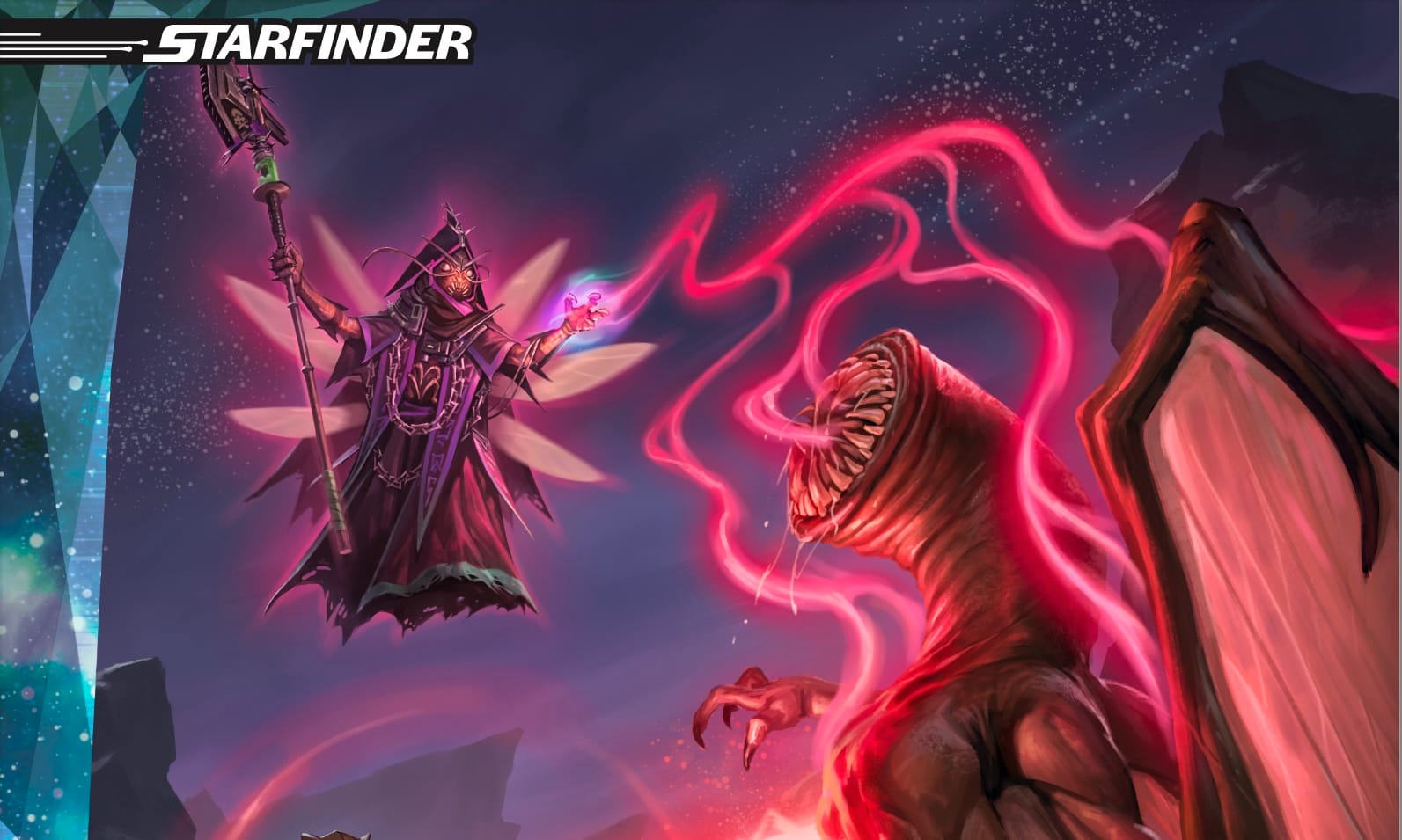
Dan: This is my first foray into the world of Stafinder, so I will be coming at it with a fresh set of eyes. I have however had some extensive playtime with the Pathfinder 2nd Edition Remaster project. That being said, I was intrigued and happy to see the system alignment between the two platforms.
Raven: If you’re not familiar with Starfinder, be prepared to jump into a world of science fantasy. It was once the cousin of Pathfinder, but with the release of the second edition, they feel more like siblings. To give you all some reference before reading my chunk of this review, I run Starfinder and Pathfinder in a shared world. My players are constantly interacting with new content from both games. I am known for changing names, creating worlds, and twisting the lore. Essentially, I tend to use these books as a guide and create a homebrew setting by bending and twisting the setting information for my purposes.
If you don’t own the Galaxy Guide, don’t worry! This book provides plenty of information for you to work with. I used it for my own world-building with ease, and the way the information is laid out is great and non-intrusive. You won’t have to worry about lore cutting off your rules or vice versa.
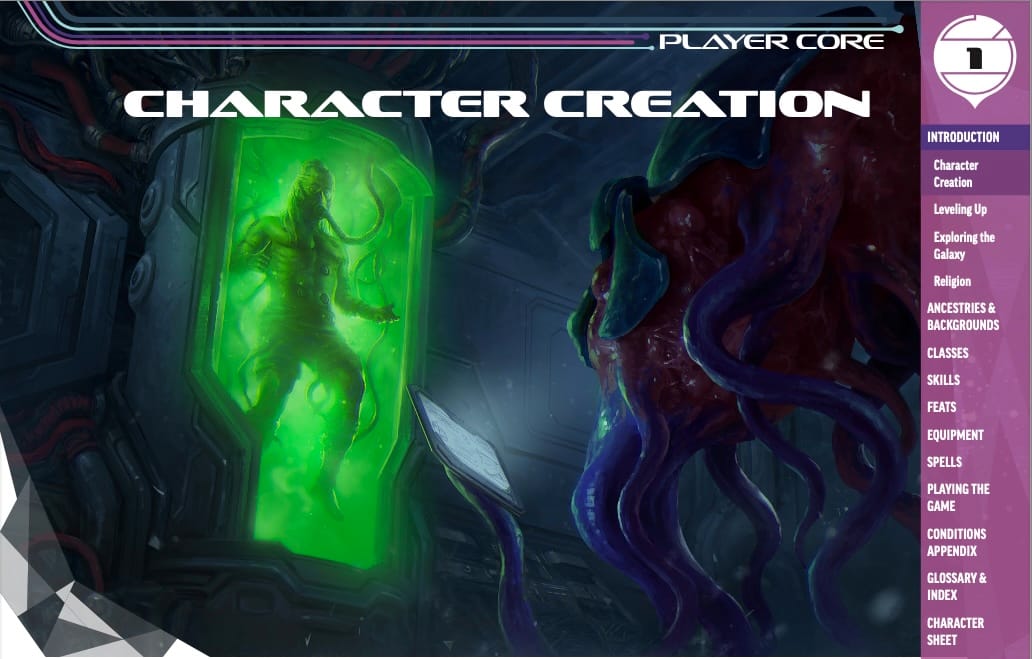
Dan: The Starfinder 2E Player Core outlines its content in a way to get players hooked with what the system is, getting them creating characters, and then an overview of how gameplay works.
During character creation, players are encouraged to create a concept of who they want to be and then choose the different attributes that fit into their vision. Attribute modifiers are based around the physical and mental abilities of the character and all start at a base of 10. As players choose classes, ancestries, and backgrounds, these scores may raise or lower, depending on their choices.
Raven: Character creation is one of my favorite things about Starfinder, and Starfinder 2e keeps that love going strong. You’ll start with your character concept and go from there. To me, this process feels similar to the first edition of the game; you won’t find too much that’s different here.
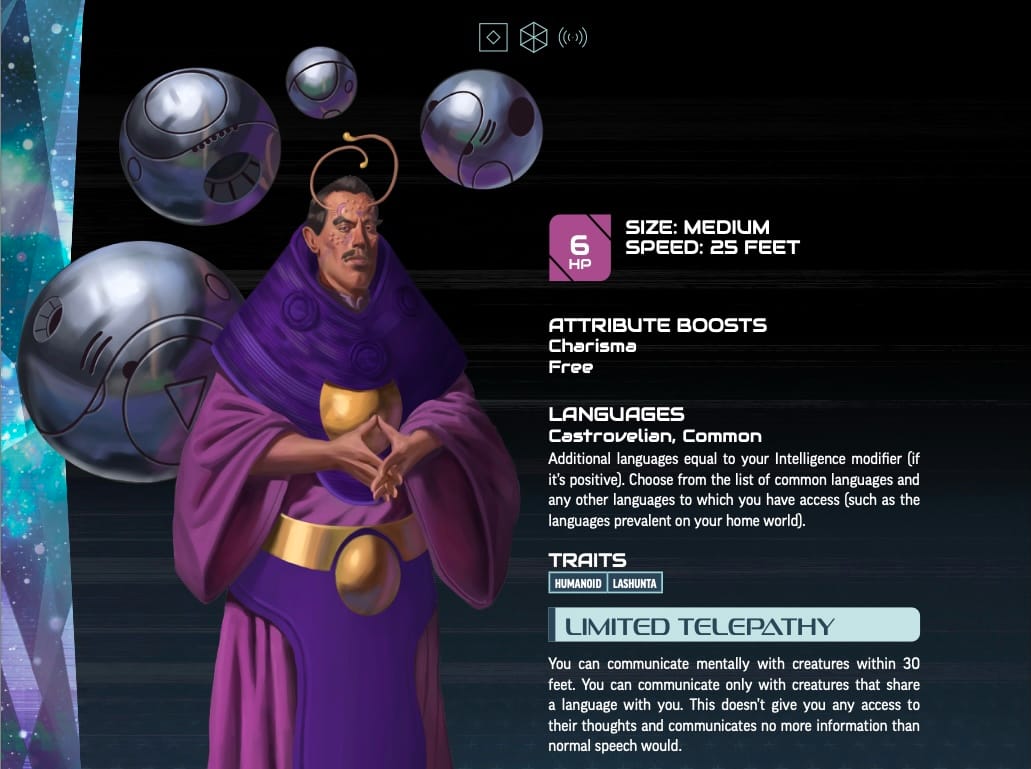
Dan: Ancestries are the lineage a character comes from and have several sub-heritages that give different attributes to the player. Backgrounds represent the experiences or upbringing a character may have going into the adventure. Each Ancestry comes with different feats that a character may gain as they level up.
Raven: To me this is the perfect starting set for new and returning players alike. A lot of good ancestries made it here and the information provided for each of them made it extremely easy for me to homebrew them. Before continuing, here is what was available in Starfinder 1e:
- Androids
- Humans
- Kasathas
- Lashuntas
- Shirrens
- Vesk
- Ysoki
Ancestries in Starfinder 2nd Edition Player Core include:
- Android
- Barathu
- Human
- Kasatha
- Lashunta
- Panthra
- Shirren
- Skittermander
- Vesk
- Ysoki
- Borai and Prismeni are the Versatile Heritages.
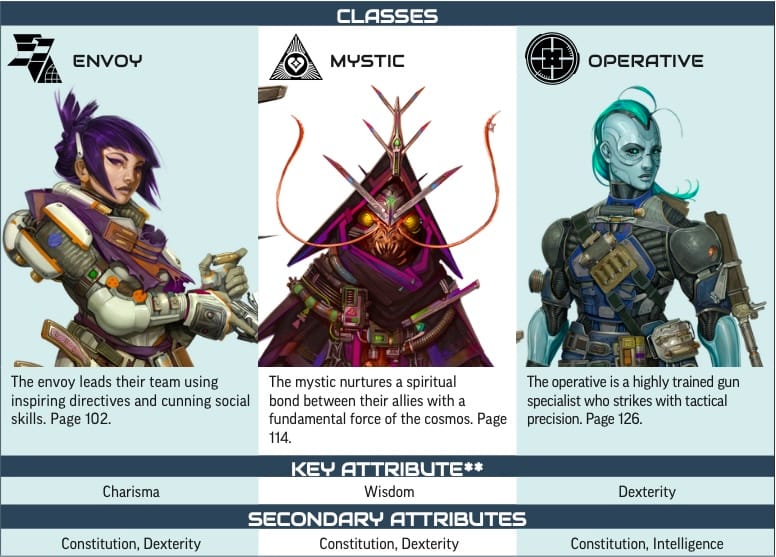
So, as you can see, we are looking at a significant increase in player options already. I am going to discuss the classes next. Here is what we had in Starfinder 1e:
- Envoy
- Mystic
- Mechanic
- Operative
- Solarian
- Soldier
- Technomancer
Here is what we are going to be working with for Starfinder 2e:
- Envoy
- Mystic
- Operative
- Solarian
- Solider
- WitchWarper
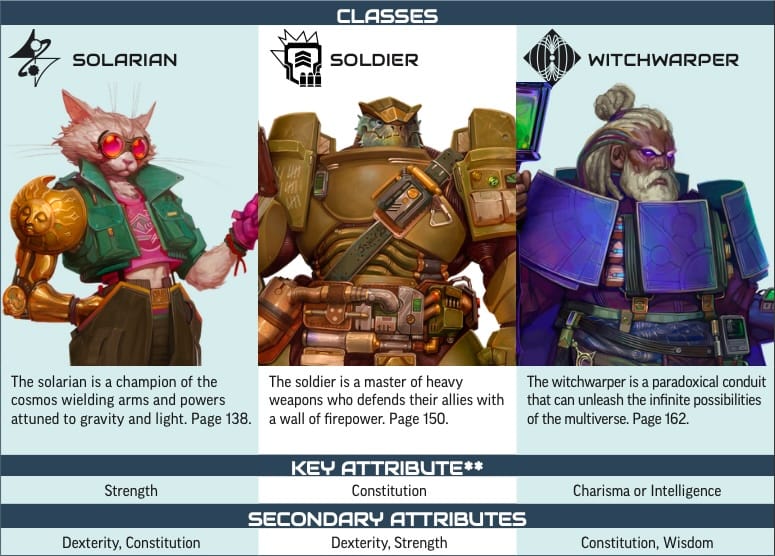
Dan: Classes are where the real fun happens. Each class is basically the career and lifestyle a character leads with different abilities and even subclass options to hone in on character expression. For example, an envoy is a master influencer that could be a politician or a con man, I’ll bite my tongue with that comparison, who uses their words to get them through situations. A soldier is the ultimate damage dealer and soaker in combat and someone who takes the lead in battle. A witchwarper is a magical being who manipulates physical and alternate planal energies to exert their will. Each class can have unique class abilities and feats to choose from as players level up and players have six different classes outlined in the Player Guide.
Raven: Missing the Mechanic and Technomancer hurt me because these are two of my favorite options to play and build around. However, WitchWarper is an extremely fun class to play, so that makes up for it, slightly. You also get a plethora of options for backgrounds, and if something that was in the first edition of the game doesn’t appear in this section, it is easy enough to convert things over to 2e. During my playtest, I converted weapons, monsters, and things from the Alien Archive. So have fun with it and experiment!
While talking about the classes, there are some things that are not 1:1 with the first edition of the game. We experimented with trying to insert things back into classes, but it was messy. Regardless, we had fun with it. The classes feel thematically appropriate, and there is plenty for you to use. Each character will feel a bit more unique in the second edition, with each class feeling like it serves more of a unique purpose. But there can still be overlap, you will not be locked into your class, and the classes did not make our playtime feel one-note.
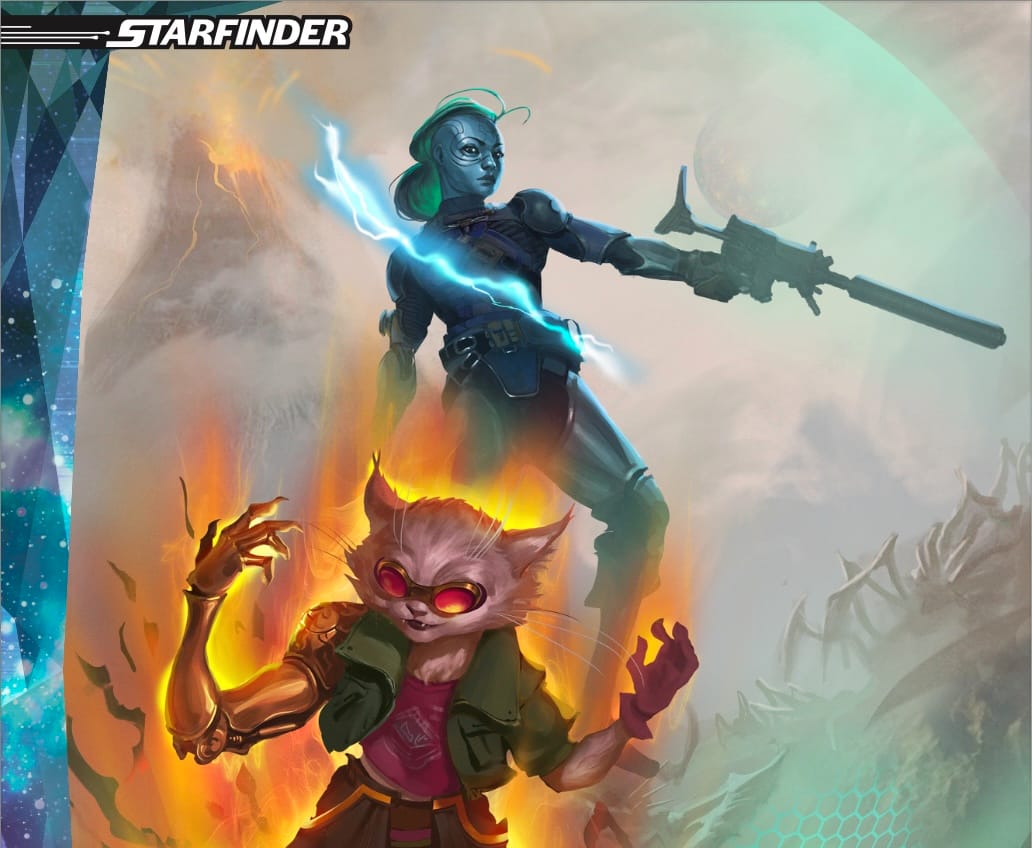
Dan: The book also outlines a number of skills and feats that characters gain as they create their character and level up. Skills are aligned to one of the six attributes and have actions associated with each. Stafinder uses a five level proficiency system (Untrained, Trained, Expert, Master, Legendary) for each skill that unlocks different abilities and modifiers when completing actions or performing skill checks in the game. Two notable skills unique to the Starfinder system are Piloting, pertaining to the operation of vehicles, and Computers.
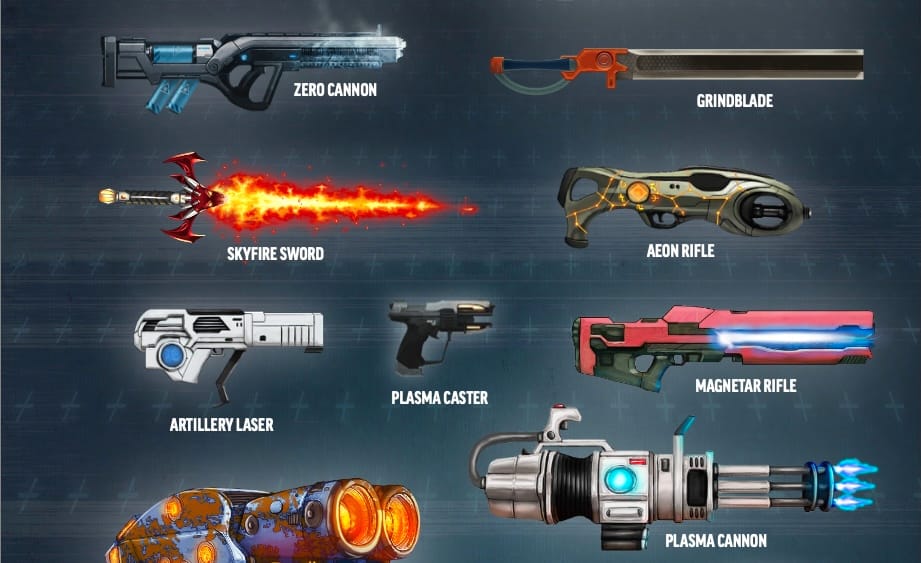
Equipment in the game is really anything you can dream up from your favorite sci-fi movies and books. Weapons include laser swords and plasma guns, armor is upgradable and comes in a variety of different high tech options, and bodily enhancements and augmentations are plentiful. Spells in the game follow the four magical traditions of Arcane, Divine, Occult, and Primal from Pathfinder, but many are tailored to the Starfinder setting such as recharge weapon, summon robot, or skim data. The Player Core comes with chapters full of equipment and spells for every situation.
The book concludes with sections on how to play the game during exploration and encounter modes and other various situations the players may encounter. Also included is a glossary of terms, conditions, and character sheet.
Overall Thoughts

Dan: As a Pathfinder player reading this book, I couldn’t help but get excited. All I could think about was how similar the systems are in terms of mechanics. The three action economy, character creation, proficiency ranking, and many other features are found in both systems. The alignment that Paizo has made opens up an incredible world of possibilities not only for cross compatibility of settings, but also making it easier for players to jump and explore new worlds without having to learn completely new systems. The lore and the world of Starfinder is set in the distant future after the collapse of the world of Golarion, but the larger story happens in the same universe. The biggest jump a Pathfinder player will have to make is shifting from a medieval fantasy world to a futuristic sci fi galaxy and the shifts in how a futuristic technology infused adventure plays out.
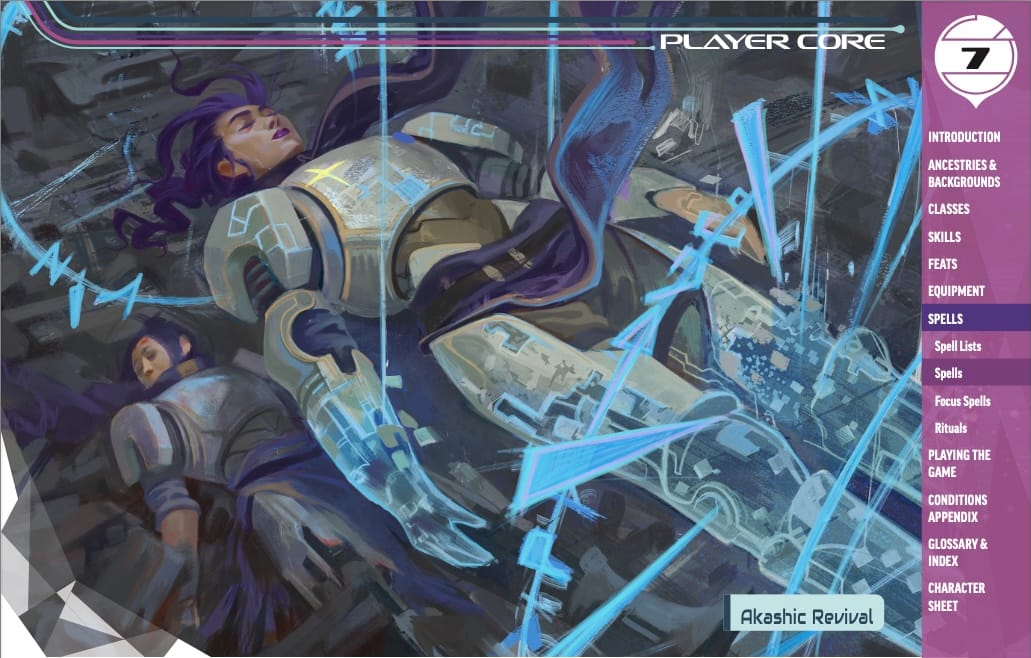
Raven: The artwork in this book is also to die for. The team behind the illustrations really knocked it out of the park. There is a lot of character and charm in each piece. The first day I got the PDF, I spent at least an hour flipping through to check out the artwork. With that being said, some of the illustrations don’t land right. Some seem too realistic while others seem too cartoony, and I wish that the book had more of a middle ground.
Dan: As always, the book itself is a work of art. The editors and designers over at Paizo have created a dynamic user experience that is well laid out in terms of content and littered with beautiful artwork and graphics. While the glossary gives players page numbers to their needed information, each page has a sidebar that makes it easy to flip through the pages and find what you're seeking.
In a world full of competing systems, I am excited to find something that gives me more options without all the heavy lifting of learning new mechanics. I love the tactical nature of Pathfinder and being able to take my adventures to the stars is something I look forward to in the near future.
Raven: Starfinder is in a good spot, and because it is connected to Pathfinder in a better way, I am excited to see how far the team will go. I like the changes from Starfinder 1e, and while there are a touch too many changes for me to list, I think the game flows more smoothly. Combat is especially more efficient than it was in the first edition of the game. What makes me happiest is that this is a nice clear introduction for new players. There are things here for returning players to enjoy but the new experience is crucial to get this off of the ground in the right direction. I can’t wait to continue my Pathfinder/Starfinder campaign and see where the new rules take us.
Starfinder Second Edition Player Core
Excellent
Starfinder Second Edition does a fantastic job introducing the Pact Worlds and all its technology, inhabitants, and their adventures to new and old players alike. The upgraded system makes it even easier for players to jump into the world of Paizo products.
Pros
- Beautiful artwork and design
- Alignment with PF2E Systems
- Unique classes built for a sci-fi setting
Cons
- Missing classes from the original Starfinder
- Missing some information from the playtest version
- Some artwork inconsistencies
This review is based on an early copy provided by the publisher. Starfinder Second Edition Player Core comes out on July 31, 2025.
